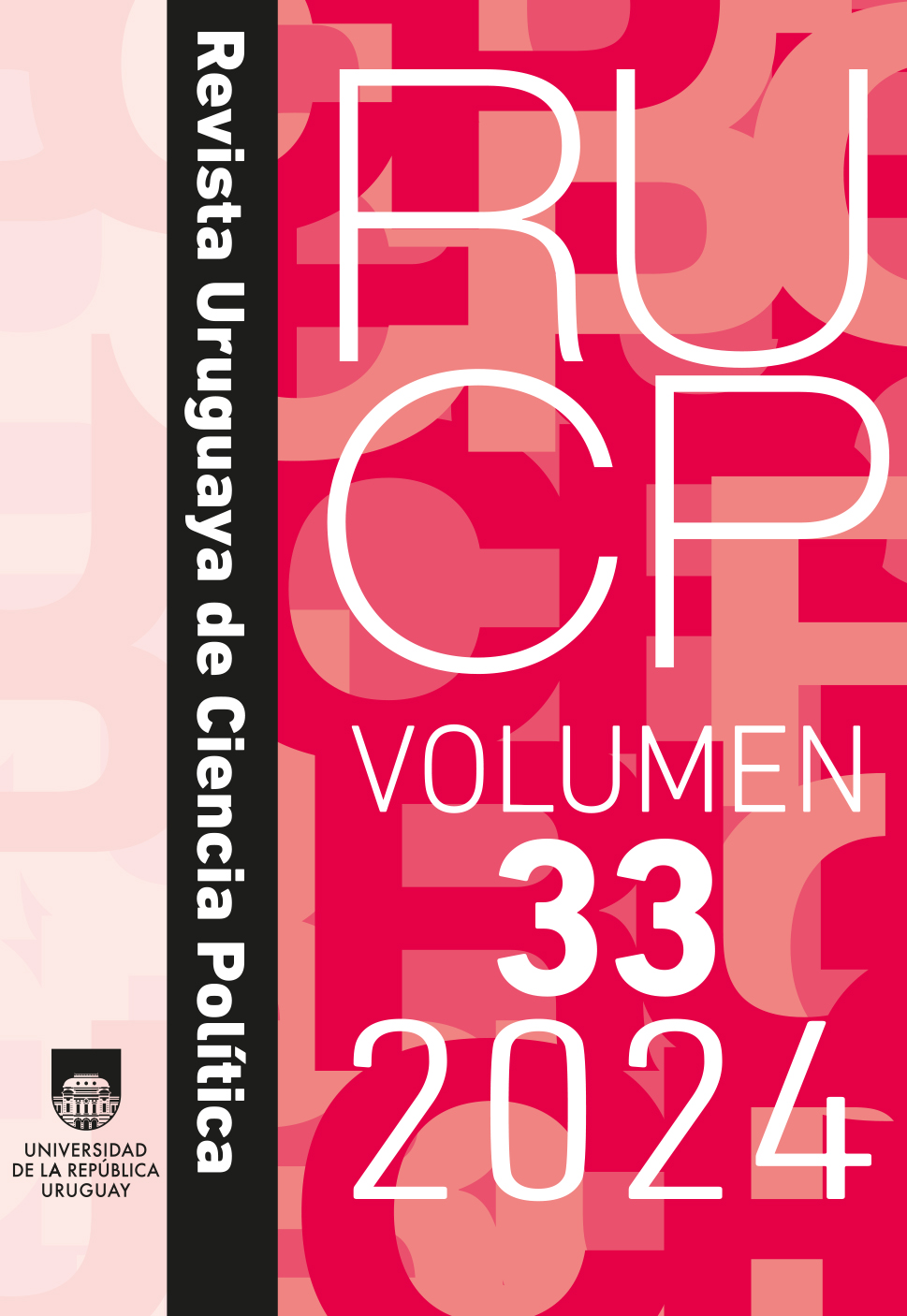The Electoral Court of Uruguay: Origin, Evolution, Strengths, and Challenges
DOI:
https://doi.org/10.26851/RUCP.33.11Keywords:
electoral organization, electoral justice, Uruguayan electoral regimeAbstract
This article summarizes the process of creation and organization of the Electoral Court of Uruguay 100 years after its foundation. It is an electoral justice institution that has been instrumental in the consolidation of Uruguayan democracy in the last century, and constitutes one of the first cases in the world of a court of these characteristics due to its autonomy and neutrality. Its evolution covers a long period in which it was affirmed and adapted both in its functions and in its form of composition to the circumstances of the political process, as we try to account in these pages. The strengths, difficulties, and challenges imposed by the new conditions in the present are also addressed.
Downloads
References
Barrientos del Monte, F. (2014). Independencia e imparcialidad en los organismos electorales de América Latina. En L. Barreda Mikel Ruíz (Ed.), Organismos electorales y calidad de la democracia en América Latina (59-88). Jurado Nacional de Elecciones.
Bottinelli, O. A. (15 de febrero, 2019). Exposición ante la Comisión Honoraria con carácter interpretativo de los Arts. 77 y 81 de la Constitución de la República, relativos a derechos y obligaciones inherentes a la ciudadanía. Sala de Ministros del Palacio Legislativo.
Corbo Longueira, D. (2009). Cómo hacer presidente a un candidato sin votos. Las elecciones protestadas de 1971. Planeta.
De Oliveira Bazilio De Souza, A. (2016). Antes de la Corte Electoral: Judicatura y elecciones en Uruguay (1825-1924). Claves - Revista de Historia (2), 199-225.
Diez de Medina, Á. (1994). El voto que el alma pronuncia. Historia electoral del Uruguay (1810-1910). FCU.
Espinosa Silis, A. (2020). Modelos de justicia electoral en América Latina. Tribunal Electoral del Poder Judicial de la Federación.
Etcheverry Medina, S. (2012). Mecanismos de acceso de la mujer a la justicia electoral: Uruguay. Revista de Derecho Electoral (13).
Garchitorena, J. (2011). Historia de un mito: las elecciones de 1971 y la denuncia del Partido Nacional. Debate.
Garchitorena, J. (2023). La Corte Electoral. Banda Oriental.
Gros Espiell, H. (1990). La Corte Electoral del Uruguay. IIDH-CAPEL.
IDEA. (2010). Electoral Justice: The International IDEA Handbook. International Institute for Democracy and Electoral Assistance.
IMPO. (s. f.). Banco Electrónico de Datos Jurídico Normativos. https://www.impo.com.uy/bases.
James, T., Garnett, H. A., Loeber, L., Van Ham, C. (2019). Electoral management and the organisational determinants of electoral integrity: Introduction. International Political Science Review, 40(3), 295-312.
Jaramillo, J. F. (2007). Los órganos electorales supremos. En D. Nohlen, D. Zovatto, J. Orozco y J. Thompson (Comps.), Tratado de derecho electoral comparado de América Latina. Fondo de Cultura Económica.
Joseph, O. (2021). Independence in Electoral Management. International Institute for Democracy and Electoral Assistance.
Lara Otaola, M. (2018). To include or not to include? Party representation in electoral institutions and confidence in elections: A comparative study of Latin America. Party Politics, 24(5), 1-11
Lhermitte, M. (2020). La campaña del plebiscito de 1980: la victoria contra el miedo. Ediciones Túnel.
Lhermitte, M. (2022). Las elecciones internas de 1982. Los ecos del No. Ediciones Túnel.
Lupu, N., Rodríguez, M., Zechmeister, E. (Eds.) (2021). El pulso de la democracia. LAPOP.
Mora Fernández, D. (1992). Reseña de Gros Espiell, Héctor, La CE del Uruguay. Revista Electoral. https://tecnologias-educativas.te.gob.mx/RevistaElectoral/content/pdf/a-1992-01-0001-084.pdf
Mozaffar, S., Schedler, A. (2002). The comparatve Study of Electoral Governance. Introduction, International Political Science Review, 23(1), 5-27.
Orozco Henríquez, J. (2007). El Contencioso Electoral, la calificación electoral. En IDEA, Treatise on Compared Electoral Law of Latin America. International Institute for Democracy and Electoral Assistance.
Penco, W. (2016). El modelo uruguayo. En Jurado Nacional de Elecciones, Justicia electoral en América Latina (mecanismos de resolución de conflictos: experiencias comparadas) (207-244).
Pivel Devoto, J. E. (1942). Historia de los partidos políticos en el Uruguay. (t. II). Tipografía Atlántida.
Poder Legislativo. (s. f.). Diario de Sesiones de la Asamblea General. https://biblioteca.parlamento.gub.uy/PublicacionesPeriodicas/busquedalibreTimeLine/?op=ds
Poder Legislativo. (s. f.). Diario de Sesiones de la Cámara de Representantes. https://biblioteca.parlamento.gub.uy/PublicacionesPeriodicas/busquedalibreTimeLine/?op=ds
Poder Legislativo. (s. f.). Diario de Sesiones de la Cámara de Senadores. https://biblioteca.parlamento.gub.uy/PublicacionesPeriodicas/busquedalibreTimeLine/?op=ds
Rodríguez, J. R., Cardarello, S. A. (2023). El contagio electoral durante la pandemia de Covid-19. Elecciones subnacionales de 2020 en Uruguay. Elecciones, 22(25), 213-252.
Romero Ballivián, S. (2021). Elecciones en América Latina. IDEA Internacional, TSE.
Urruty Navatta, C. A. (2007). El Régimen Electoral Uruguayo. Revista de Derecho Electoral (4).
Downloads
Published
Issue
Section
License
Copyright (c) 2024 Revista Uruguaya de Ciencia Política

This work is licensed under a Creative Commons Attribution-NonCommercial-NoDerivatives 4.0 International License.



























